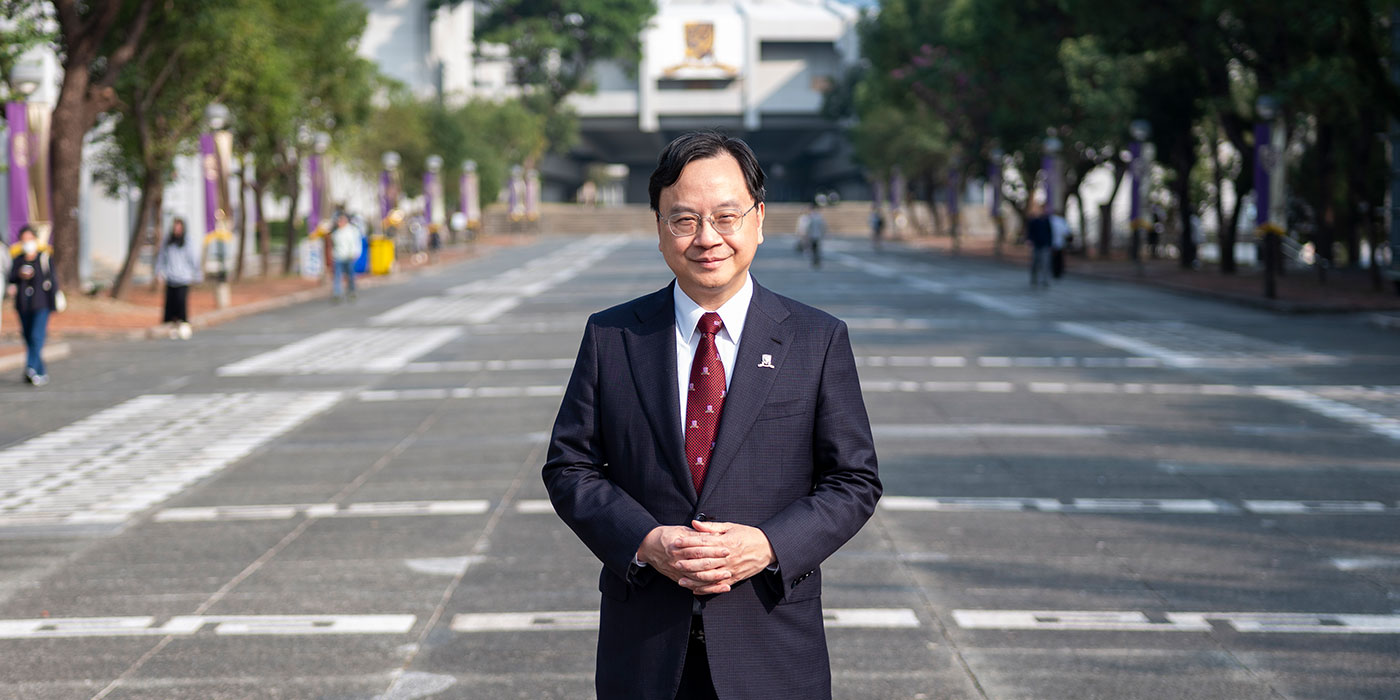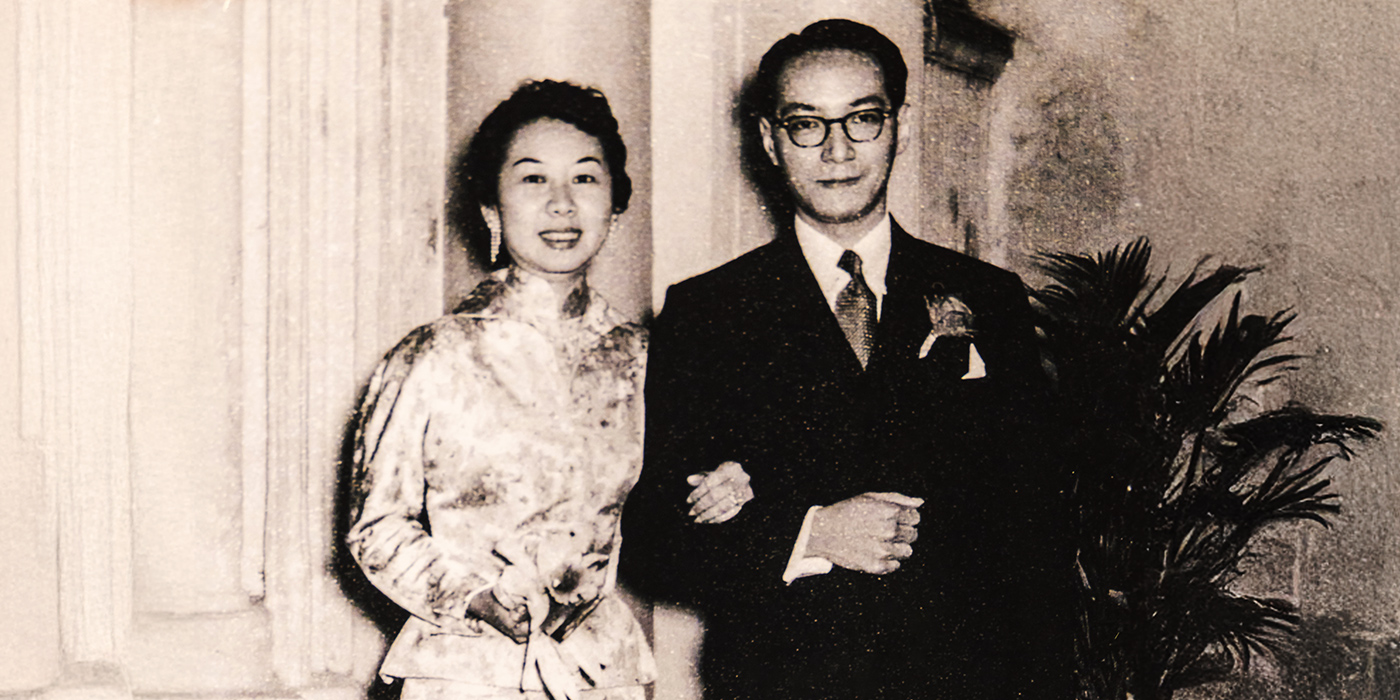A love predestined
Unfurl Chinese and world landscapes with Lois Conner
Strolling along the University Mall, Lois Conner picks up the fallen azaleas and, inhaling deeply, tosses them in the air. “I love the smell of flowers. Some, like guihua (osmanthus), transport me immediately to Guilin, my laojia (old home).”
For four decades, the 71-year-old American landscape and portrait photographer has trekked around various parts of the world with her big banquet camera—a camera made for taking group portraits at the turn of the century. From this camera, she produces 7”x17” platinum prints or, larger still, 23”x60” ink prints known for their deep sense of place, history and culture. Eight years after her last visit to the city, Conner is in Hong Kong again as the University’s artist-in-residence, staying on campus till the end of March. Last month, she delivered a lecture at the Institute of Chinese Studies, sharing her ideas on China’s changing urban and rural mien with the University community and members of the public.
Landscape as culture

Setting foot in China in 1984 on a Guggenheim fellowship, and returning year after year to her beloved mountains, towns and villages, Conner is an old China hand who has tirelessly recorded the remarkable changes in the country over the decades, and offered commentary through portraiture with multiple layers of meaning. Under her sweeping narratives, history pulses through the ruins of the Garden of Perfect Brightness, or Yuanming Yuan; and disappearing hutongs are captured alongside the Bird’s Nest and construction cranes in Beijing.
Conner’s work originates from long walks throughout the cities, towns and the countryside. She returns often to places that interest her the most. Since 1984, she has photographed karst mountains along the Li River in Yangshuo, which she considers home. Carrying her 70-pound equipment, she has climbed Mount Huangshan, inspired by the grace and vigour of grandmothers walking ahead, shouting words of encouragement. Altitude sickness was no deterrent to her visiting Tibet, and ancient dwellings and Buddhist monuments along the Silk Road and soon-to-be submerged towns along the Yangtze River have been among her subjects. From the late 1990s, she became obsessed with offices in New York, Hong Kong, Beijing and around the world, as another way to describe the landscape—this time, from inside the “boxes” where urban dwellers lead their lives.

“I am interested in landscape and how culture can be revealed through it,” she says. “I am an obsessive collector and observer of the landscape. What initially sends me out into the unknown is often a photograph or painting that haunts me because of its absolute unfamiliarity. What I end up uncovering is unpredictable, surprising, and often exhilarating. Trying to describe that encounter visually through photography is nearly impossible.
“It’s invigorating trying to twist what the camera faithfully describes into something of fiction. The camera’s elongated rectangle can perhaps, with the confluence of light, circumstance, chance, and a dozen other factors, conjure up a world, one seemingly half-imagined, or one that breathes with the life of thousands of years of history. Sometimes it simply acknowledges the beauty of the land.”


Artistic déjà vus
Photography has always been part of her life. At nine, she was given her first camera by her father. In high school, she photographed for the school newspaper. At 18, she went to study painting at the University of Delaware for two years, and after that moved to New York in 1971 to study fashion design. Later, the photographer Philippe Halsman, who taught the Psychological Portraiture class she took in 1973, encouraged her to study photography as her real métier.
At Yale, in 1980, during her graduate study, she took a class in Chinese painting from the Ming dynasty with the art historian Richard Barnhart. Intimidated by her lack of knowledge of the subject, she asked the professor if she could drop the class. Rejected by Barnhart on the grounds that inputs from students of a variety of subjects are invaluable, she stuck it out. Her class visited the Metropolitan Museum of Art, where they closely examined Tang and Ming dynasty scrolls from the Crawford collection. When she saw paintings of the karst formations, she wondered why the painters made up such fantastical mountains. But she was told that these mountains were in fact real. It sealed the moment when she decided she needed to see the unique landscape of the Li River for herself.
Graces of the gods


In 1984, walking around West Lake in Hangzhou, she set up her camera to photograph a ladder set next to a tree for autumn pruning. At that time, due to technical limitations, she could only take 10 pictures a day. It was still morning, so she was careful and only exposed one piece of film. Throughout the remainder of her nine-month journey, she would think of this picture and wish she had made an additional frame, as she worried that at the last moment before she exposed it, someone had walked in front of the lens. The ladder was one of her photographs of China that John Szarkowski, director of the photography department at the Museum of Modern Art in New York, chose for the museum’s collection.
Twirling the lotus
When she returned to Hangzhou in 1995, it was the rainy season. The light was flat, so she moved in close to the lotus. The stems of the lotus were like calligraphy, drawing another language across the place. A decade later, this self-contained, luminous, tranquil world would offer solace. In 2018, to honour her late mother, and searching for her spirit, Conner looked down into the water at the sky to photograph the lotus.


In winter, with their roots still attached to the dying stems, lotus leaves can melt parts of the ice. “They looked like chalk sketches. It was a world so cold, but very beautiful. I had to ‘draw’ it—I think of my photographs as a kind of drawing,” she says.
During the pandemic, Conner started making circular pictures. “It was a strange, unprecedented time, with no beginning and end—like the circle. When forming a narrative, often it needs to be short and quite specific. Or, at times, a longer story; and sometimes, you need the sublime and infinite.”

As a veteran artist, what advice does she have for students here? “It is good to have a trajectory, but it’s also important to be open for other things to happen. If you are distracted and are really interested in something else, you have to be unafraid to follow that other direction through.” Her own artistic journey, eventually landing on photography after following many other paths, offers living proof.

By Amy Li
Photos by Keith Hiro




















